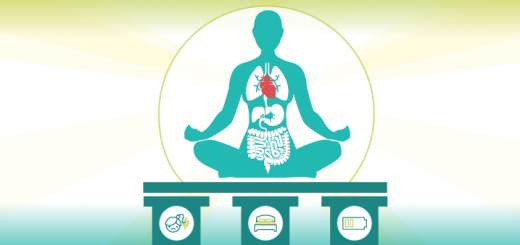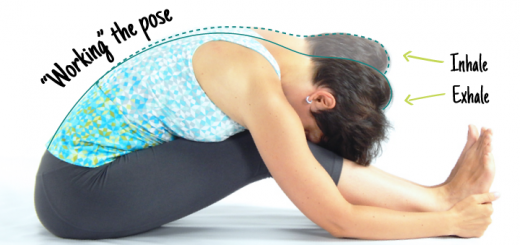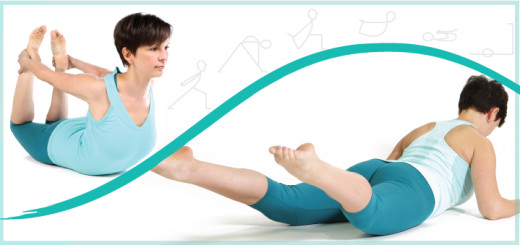Do you need tightening or loosening? Stability and ease at every level of the human system
17“Clinical psychologists sometimes say that two kinds of people seek therapy: those who need tightening, and those who need loosening. For every patient seeking help in becoming more organized, self-controlled, and responsible about her future, there is a waiting room full of people hoping to loosen up, lighten up, and worry less.” (The Happiness Hypothesis by Jonathan Haidt).
This idea of tightening and loosening is surprisingly similar to the yogic idea of stability and ease presented in the Patanjali’s Yoga Sutras. There it is applied specifically to the asana practice – Sthira-sukham-asanam – that can be translated as “Every yoga pose must possess the qualities of stability and ease”. The main idea here is that we need to be both stable AND flexible at the same time. Too much stability without ease leads to rigidity and stagnation; and too much flexibility without a stable base means that we can easily be thrown off balance.
 We could just as easily expand that idea from the physical body to other layers of the human system: our physiology, mental process, emotional responses and spiritual longings. Veering too much toward one or the other end of the spectrum can have serious consequences to our health and wellbeing.
We could just as easily expand that idea from the physical body to other layers of the human system: our physiology, mental process, emotional responses and spiritual longings. Veering too much toward one or the other end of the spectrum can have serious consequences to our health and wellbeing.
 On the physical level, being too tight manifests as muscle tension, restricted movement and the whole body being “stuck” in a posture that you assume for most of your day. Being too loose leads to overall structural instability, overworked muscles that have to both move the body and hold it together, sacroiliac joint pain, dislocations and so on. This is exacerbated by the fact that many yoga practitioners are intent on increasing their flexibility, whether it is serving them or not.
On the physical level, being too tight manifests as muscle tension, restricted movement and the whole body being “stuck” in a posture that you assume for most of your day. Being too loose leads to overall structural instability, overworked muscles that have to both move the body and hold it together, sacroiliac joint pain, dislocations and so on. This is exacerbated by the fact that many yoga practitioners are intent on increasing their flexibility, whether it is serving them or not.
![]()
 On the physiological level, the functioning of most our bodily systems (digestive, circulatory, immune and so on) is tied to the state of our autonomic nervous system(ANS). The two branches of the ANS are always wrestling each other – if you find yourself in a “fight-and-flight” mode most of the time (which is activated by the sympathetic nervous system) you will end up “tightly-wound”, stressed out and jumpy, which places great wear and tear on your entire system. On the other hand, if you mostly reside in rest-and-digest mode (which is activated by the parasympathetic nervous system), you might get lethargic, have trouble rising up to challenges and getting motivated for anything.
On the physiological level, the functioning of most our bodily systems (digestive, circulatory, immune and so on) is tied to the state of our autonomic nervous system(ANS). The two branches of the ANS are always wrestling each other – if you find yourself in a “fight-and-flight” mode most of the time (which is activated by the sympathetic nervous system) you will end up “tightly-wound”, stressed out and jumpy, which places great wear and tear on your entire system. On the other hand, if you mostly reside in rest-and-digest mode (which is activated by the parasympathetic nervous system), you might get lethargic, have trouble rising up to challenges and getting motivated for anything.
![]()
 On the level of mental processing, we know that rigid thinking can become a mental block that prevents us from accepting and processing new information, keeps us stuck in our habitual patterns and stifles creativity. At the other end of the spectrum, constant mental distraction and inability to sustain focus impact every aspect of our lives including work, relationships, hobbies and health.
On the level of mental processing, we know that rigid thinking can become a mental block that prevents us from accepting and processing new information, keeps us stuck in our habitual patterns and stifles creativity. At the other end of the spectrum, constant mental distraction and inability to sustain focus impact every aspect of our lives including work, relationships, hobbies and health.
![]()
 On the level of emotions, too much tightness manifests as being a “bottler”, while too much looseness with one’s emotions leads to “brooding”. “Bottling” pushes the unwanted feelings aside while trying to present an upbeat and chipper front. The problem is that NOT thinking about something takes enormous mental energy and suppressed emotions are bound to leak out in some other unfortunate ways. “Brooding” manifests as stirring uncomfortable emotions over and over, unable to let go. This can lead to worry, obsession and exaggeration of even the slightest misfortunes.
On the level of emotions, too much tightness manifests as being a “bottler”, while too much looseness with one’s emotions leads to “brooding”. “Bottling” pushes the unwanted feelings aside while trying to present an upbeat and chipper front. The problem is that NOT thinking about something takes enormous mental energy and suppressed emotions are bound to leak out in some other unfortunate ways. “Brooding” manifests as stirring uncomfortable emotions over and over, unable to let go. This can lead to worry, obsession and exaggeration of even the slightest misfortunes.
![]()
 And on the level of spiritual longing, we know that rigid fundamentalist beliefs can lead to intolerance, bigotry and exclusion of aspects of reality that do not conform to those beliefs. On the other hand, the inability to connect to anything greater then oneself leaves many people disconnected, adrift and unhappy.
And on the level of spiritual longing, we know that rigid fundamentalist beliefs can lead to intolerance, bigotry and exclusion of aspects of reality that do not conform to those beliefs. On the other hand, the inability to connect to anything greater then oneself leaves many people disconnected, adrift and unhappy.
The cool thing about yoga is that unlike other disciplines (like physical therapy, psychology, philosophy and so on), it offers us tools to work toward balance between stability and ease at each one of those levels. And the choice of appropriate yogic tools will depend on which level of your system needs more tuning. Not all of those tools are asana-related.
In the next few weeks we will dive deeper into each one of those layers and try to figure out what it is we are looking for and how we can use yoga to find it.




















This sounds intriguing, looking forward to more
Much more to come; thank you Susan!
What a brilliant article. I thoroughly enjoyed reading it and think diving deeper will be enlightening. Thank you Olga, and Happy New Year.
Thank you Arlene! Happy New Year to you, too!
Perfect start for 2017! Looking forward to learn more about koshas.
This is wonderful and very informative . I loved the way you worded and described each Kosha to its modern day times. Thank you very much. I love reading your posts.
Thank you. This article helps to describe the need for balance in all aspects of our lives. I’m looking forward to learning more!
Thank you Olga. The importance of balance and harmony. Yoga helps us get there.
All the tools are within us.
Wonderfull beginning of the year.
Synchronicity! content w/perfect timing for me, as I flesh out my year plan of yoga instruction/study. Thank you!
ahh lovely post -you always seem to write with great simplicity and clarity. thanks for sharing -look forward to the series
Fascinating – I can see that I need tightening up! Thanks for the thought provoking article.
Very interesting. Seems I need tightening in some areas of my life, and loosening in others. Looking forward to this.
Beautiful article. Thanks Olga for your clarity and guidance.
Love this!
Thank you for another excellent article! I often posts these for my students. You have some of the best content and presentation I’ve seen and I’m very selective about where I source my information. I hope you will write a book one day!
This is to me one of the best articles you have written. It is clear and precise, and all the points fit together spot on with Patanjali’s concept.
What’s more, I was just preparing my classes earlier thinking it would be time again to introduce sthira-sukha to a newish group. Then I came to your web site and boom. Your article gives me more material to put into my classes. Looking forward to the next ones. Thank you.
Well this was another Brilliant. Thanks for taking it on and delivering it so well!